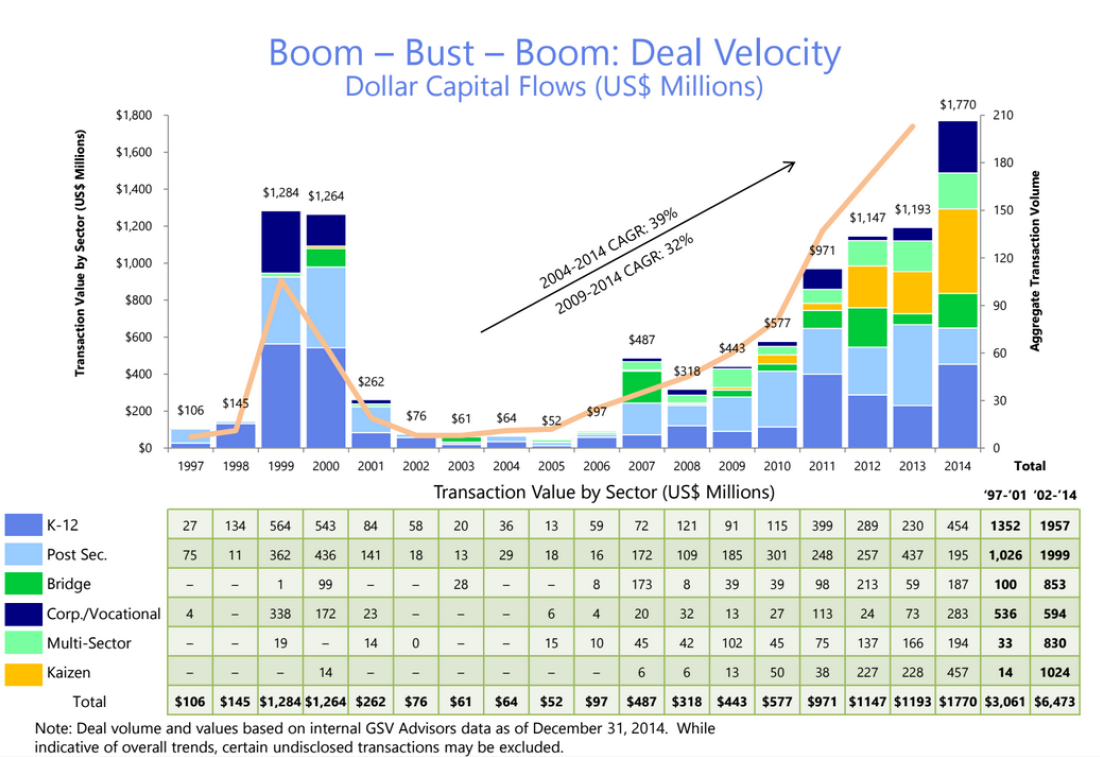The Impact of a Portfolio
Mission-Driven Investing in Education

Impact, mission-driven, or mission-related investing begins with discretesocial goals and aims to yield tangible, scalable social + financial returns. To me, it is focusing on what you know, what you love, and where you know you can make a measurable difference.
“Impact investing is actively placing capital in businesses and funds that generate social and/or environmental good and a range of returns, from principal to above market, to the investor.” — The Monitor Institute
I decided to disrupt myself, to incrementally transition from the classroom to the boardroom in the run-up to the dot-com bubble and was triggered to jump in the summer of 2001, at the height of the downfall. One should make a bold career shift at an economic bottom, because there’s nowhere to go but up, right? Sounds good on paper, anyway. Here’s the Cliff Notes version.
My professional journey began with a decade of teaching and coaching in middle and high schools along the U.S. eastern seaboard and with brief stints in the UK and Japan. I felt the pull to impact education at scale. So, how exactly would a classroom teacher put a proverbial dent in the universe of learning? Back then, at the turn of the Millennium, you would likely choose to become anedupreneur, working from outside the system to solve problems. Okay, then would you do this from a single operating platform (for-profit or nonprofit) enterprise — or via a portfolio of enterprises? If you were born and raised in a household of a co-founder of one of the nation’s premiere venture capital firms, you just might choose the portfolio approach. But, how do you get there? You’ve been teaching and coaching for over a decade with parchment that says ‘English Teaching’ and ‘Elementary Education’. The answer for me was apprenticeship in a relationship that I could trust — and a brain rewiring via full-time B-school experience. Sometimes immersion is the only way.
My investing story has evolved considerably over 15 years, but, excepting a few healthcare and enterprise software solutions, has always been headlong in education. The story begins in a unique family office apprenticeship (Bonsal Capital), extends into institutional micro-venture capital (New Markets), includes a few one-off angel investments, and is currently pegged to incubation and innovation cluster support (Towson University). The portfolio below represents my lifetime direct investment experience in early childhood, K-12, and postsecondary education.
Out of 27 investments, there have been 13 realizations (48% of the portfolio, one not yet public), yielding a 3X return on invested capital. These returns are born by three write-offs, five at 1–2x return, two at 3–5x, and three at 6–10x, yielding an 18–20% IRR, which works for most financial investors. 60% of these investments were made at the seed or early stage, 40% at growth or late stage, where the average return horizon was 4.5 years. Put simply, the above returns represent an 89% ‘success’ rate in a half-realized portfolio with 3X cash-on-cash returns. Funny thing is, that success rate is roughly the inverse of the strategy born by ‘swing for the fence’ venture investors, the ‘one in ten’ approach, where one massive winner creates the desired financial return (returns principal), and the laggards and carnage make up the difference and are deemed part of the business. A third of the portfolio written off? Not in education! Carnage and impatient capital need not apply! And even if you wanted to swing for the fence on every company, the problem is two-fold: 1) there are very few unicorns ($B companies) in education and 2) a majority failure rate with end users that are students, administrators, LEAs, IHEs, and even learners on the consumer side of the equation would send the innovation movement backward by a decade.The Impact of a Portfolio — Baltimore EdTech — Medium: